On the Origins of New Forms of Life
9.8: On the evolution of whales
EUGENE M. MCCARTHY, PHD GENETICS
|
|
(Continued from the previous page)
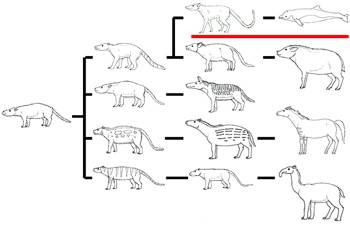 | |
| The evolution of whales (as depicted in Wikipedia): Is the origin of whales from a four-legged terrestrial mammal (underlined in red) really more plausible than their derivation from well- documented, preexisting gigantic whale-like sea creatures (see figures 9.4 and 9.5 below) with whale-like teeth and a whale-like diet? Image: Dlanglois |
The word whale, in biological discussion, refers not only to the large marine mammals commonly designated by that name, but also to other, smaller members of the order Cetacea such as dolphins, porpoises, belugas, and narwhals. In the discussion that follows, whales is used in this broader sense.
The accepted account of the evolution of whales is poorly documented in terms of fossils. Relatively few marine fossils of any kind are known from the Paleocene, the first epoch of the Cenozoic Era, the so-called Age of Mammals. It isn't surprising, then, that no fossils of whales or whale-like animals are known from the Paleocene. The earliest fossil forms normally classified as whales date from the ensuing epoch, the Eocene (~54–34 mya).¹
The usual story about the evolution of whales says that they, and all the other placental mammals (as has already been explained, evolved from a “small, primitive, generalized” terrestrial placental mammal living in the late Cretaceous Period (approx. 70 mya). Many even take it for granted that whale ancestors first evolved into ungulates and only later became whales.² The creatures usually proposed as whale precursors are the mesonychid ungulates of the middle and lower Paleocene. But writers who assert this radical transformation actually occurred rarely mention that late Paleocene fossils documenting the transition between mesonychids and the earliest recognized whales are entirely lacking.³ As paleontologist Robert L. Carroll (1997: 329) notes,
Carroll (1997: fig. 12.19) pictures the skull of the upper Paleocene mesonychid Sinonyx beside that of Pakicetus (lower Eocene), a supposedly transitional form between mesonychids and early whales. The teeth of Sinonyx, as figured there, are more similar to those of a modern dog than to those of an whale. Recent finds have shown Pakicetus itself was a terrestrial animal with fully developed legs. Apparently, the main reason for classifying it as a cetacean is that its ear structure is in some ways similar to that of a whale.
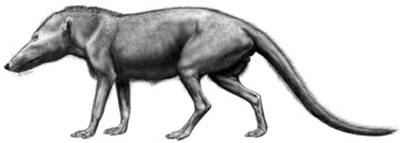 Figure 9.3: A reconstruction of Pakicetus, as it appears on the lab website of Hans Thewissen (J. G. M. Thewissen), one of the most widely recognized authorities on early fossil whales. Although the information accompanying this figure on the website says “pakicetids were the first cetaceans,” and in the literature Pakicetus is usually described as a primitive whale, this animal has the appearance of a primitive, doglike, terrestrial carnivore. Is the evolution of whales from an animal like this more plausible their evolution from ones like those pictured in figures 9.4 and 9.5, below.
Figure 9.3: A reconstruction of Pakicetus, as it appears on the lab website of Hans Thewissen (J. G. M. Thewissen), one of the most widely recognized authorities on early fossil whales. Although the information accompanying this figure on the website says “pakicetids were the first cetaceans,” and in the literature Pakicetus is usually described as a primitive whale, this animal has the appearance of a primitive, doglike, terrestrial carnivore. Is the evolution of whales from an animal like this more plausible their evolution from ones like those pictured in figures 9.4 and 9.5, below.
But an examination of the currently accepted reconstruction of Pakicetus (Figure 9.3) may convince many readers that Pakicetus, as a whole, is more like a dog than a whale. On the same web page,⁴ maintained by the laboratory of Hans Thewissen, a widely recognized authority on early fossil cetaceans, where Figure 9.3 originally appeared, another illustration shows the skulls of two pakicetids (Ichthyolestes and Pakicetus) are comparable to that of a modern coyote (Canis latrans). Saying that the evolution of whales started with this doglike animal seems unnecessary and far-fetched when fossils that long predate it are actually very similar to whales (see figures 9.4 and 9.5 below).
But those who make such claims also embrace the notion that whales (and all other placental mammals) evolved from a tiny late Cretaceous shrewlike insectivore. They fail to mention, or perhaps do not realize, that whale-like, whale-sized creatures existed already in the Cretaceous, prior to the Paleocene.⁵ These animals, called mosasaurs, were air-breathing marine animals.⁶ They were abundant and existed in a wide variety of forms, ranging in size up to 20 m (~65 ft) — slightly longer than a bull sperm whale.⁷ As Lingham-Soliar (1995: 178) notes, “From a handful of species in the Turonian [~94–89 mya] they expanded to a total of approximately seventy species worldwide during the course of their evolution.” The conventional account of that evolution says, however, that mosasaurs were reptiles and that they became extinct, along with the dinosaurs, at the end of the Cretaceous (~65 mya).
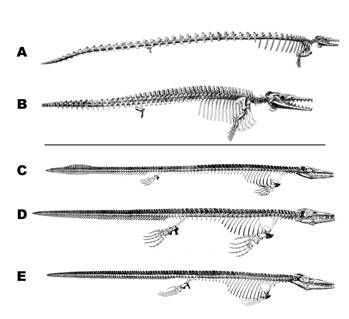 Figure 9.4: The two skeletons (from Kellogg 1936, not shown to
scale) above the line are those of two animals generally
recognized as early whales. A: Basilosaurus cetoides (~18m/60ft), also known as Zeuglodon, and B: Zygorhiza kochii (~6m/20ft). Both are from late Eocene strata. The three skeletons
below the line (figures from Williston 1898, Plate LXXII), all of late Cretaceous age (~30 million years older than Basilosaurus and Zygorhiza), belong to animals normally classified as marine reptiles of the family Mosasauridae (mosasaurs). The evolution of whales from organisms such as these is far more plausible than the evolution of whales from terrestrial tetrapods.
C: Clidastes propython, D: Platecarpus tympaniticus, E: Tylosaurus proriger. Although these three animals are shown about the same size in the drawing, in life, Clidastes was the smallest (~4 m/13 ft), Platecarpus, the next largest (~7 m/24 ft), and Tylosaurus, the largest of all (~9m/30 ft). Note that while the hind limbs are more developed in the older forms
(C, D, E), they are also present, in a reduced state, in the younger ones (A and B). Thus, forms A and B are intermediate between the Cretaceous forms and modern whales. The evolution of whales from such precursors is far more reasonable than their derivation from a “generalized shrewlike insectivore.”
Figure 9.4: The two skeletons (from Kellogg 1936, not shown to
scale) above the line are those of two animals generally
recognized as early whales. A: Basilosaurus cetoides (~18m/60ft), also known as Zeuglodon, and B: Zygorhiza kochii (~6m/20ft). Both are from late Eocene strata. The three skeletons
below the line (figures from Williston 1898, Plate LXXII), all of late Cretaceous age (~30 million years older than Basilosaurus and Zygorhiza), belong to animals normally classified as marine reptiles of the family Mosasauridae (mosasaurs). The evolution of whales from organisms such as these is far more plausible than the evolution of whales from terrestrial tetrapods.
C: Clidastes propython, D: Platecarpus tympaniticus, E: Tylosaurus proriger. Although these three animals are shown about the same size in the drawing, in life, Clidastes was the smallest (~4 m/13 ft), Platecarpus, the next largest (~7 m/24 ft), and Tylosaurus, the largest of all (~9m/30 ft). Note that while the hind limbs are more developed in the older forms
(C, D, E), they are also present, in a reduced state, in the younger ones (A and B). Thus, forms A and B are intermediate between the Cretaceous forms and modern whales. The evolution of whales from such precursors is far more reasonable than their derivation from a “generalized shrewlike insectivore.”
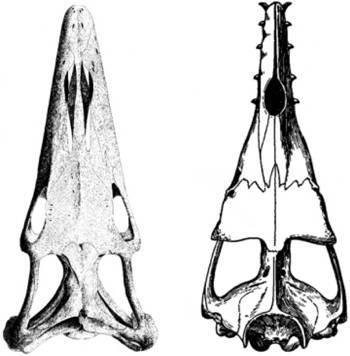 Figure 9.5: Comparison of the skulls of a mosasaur and an early whale
(dorsal views). A: The late Cretaceous mosasaur Platecarpus
coryphaeus(from Williston 1898: Pl. XIV). B: The middle Eocene
whale Dorudon atrox (from Fraas 1904). Note that the while the
nasal openings are in approximately the same position in both skulls,
there is a single, fused opening in the more recent Dorudon.
The evolution of whales from forms such as Platecarpus is far more
plausible than is the evolution of whales from a small terrestrial animal
like Pakicetus (see Fig. 9.3).
Figure 9.5: Comparison of the skulls of a mosasaur and an early whale
(dorsal views). A: The late Cretaceous mosasaur Platecarpus
coryphaeus(from Williston 1898: Pl. XIV). B: The middle Eocene
whale Dorudon atrox (from Fraas 1904). Note that the while the
nasal openings are in approximately the same position in both skulls,
there is a single, fused opening in the more recent Dorudon.
The evolution of whales from forms such as Platecarpus is far more
plausible than is the evolution of whales from a small terrestrial animal
like Pakicetus (see Fig. 9.3).
Nevertheless, the skeletons and skulls of mosasaurs and early whales are similar (see figures 9.4 and 9.5 above), so similar that the evolution of whales from such animals would require little if any alteration. As Lindgren et al. (2007: 158–159) point out, “the dorsal and caudal vertebrae in the backbone of” the late Cretaceous mosasaur “Plotosaurus have similar dimensions … and are arranged in functional
The teeth of Mosasaurus hoffmanni, as pictured by Lingham-Soliar (1995: 160) are quite similar to those of late Miocene Zygophyseter varolai, an early sperm whale (Bianucci and Landini 2006). The teeth of mosasaurs such as Mosasaurus⁸ and Hainosaurus⁹ are similar, also, in both size, and in crown and root morphology, to those of large, living toothed whales, such as those of Orcinus, Physeter, and Pseudorca (Hillson 2005: 72, fig. 1.47).¹⁰,¹¹
Both Everhart (2002, 2007) and Field et al. (2015) have pointed out that the presence of young mosasaurs in the middle of what was the Cretaceous Western Interior Seaway, in a pelagic environment far from any ancient shoreline, indicates that mosasaurs were viviparous. Indeed, Field et al. (ibid, p. 405) go so far as to say that available fossil evidence, together with the inappropriate skeletal anatomy of mosasaurs, which precluded their going on shore to lay (as do sea turtles), shows that these animals would “have had to give birth to live young.”
Like modern whales, mosasaurs were deep divers—their remains show signs of avascular necrosis (Rothschild and Martin 1988, Martin and Rothschild 2005; Martin and Rothschild 1989), a condition resulting when nitrogen forms bubbles in body tissues after a dive. A recent study has shown deep-diving sperm whales are also affected by this condition (Moore and Early 2004). Moreover, the remains of giant squid, prey taken by large extant toothed whales during deep dives, have been found in the gut contents of ancient mosasaurs (Martin and Rothschild 2005: 343).
"Co-ossified pygal and caudal vertebrae in Late Cretaceous mosasaurs from the southeast Netherlands, northeast Belgium, and North America are compared with lumbar and caudal vertebrae from fossil and extant whales. Both infectious spondylitis and idiopathic vertebral hyperostosis afflicted these marine tetrapods. The causes of the infectious disease and of the idiopathic disease are similar in the compared lifeforms. The location of idiopathic hyperostosis along the vertebral column implicates axial locomotion in mosasaurs, as in whales." (The preceding is the abstract of: Mulder (2001) Paleobiology 27: 724-734.)
The evolution of whales from mosasaurs is thus all the more plausible, since during locomotion the vertebral column of mosasaurs, at least in the opinion of some scholars, moved up-and-down (axially) like whales—not from side to side as in snakes and lizards. It is, of course, true that another school of thought exists on this point, that is, that some specialists in the field think that mosasaur movement was like that of lizards. But neither of these opinions has been clearly established. Thus, it seems wiser to base our reasoning about mosasaur relationships upon their well-known skeletal anatomy, which clearly links these animals to whales, than to dismiss the implications of that anatomy merely because some—but by no means all—paleontologists think mosasaurs moved with a side-to-side slither like a lizard.
Some have claimed mosasaurs are related to snakes (Lee 1997; Lee and Caldwell 2000), an idea first proposed more than a century ago by paleontologist Edward Drinker Cope (Cope 1869).¹² (Animals currently classified as early whales, such as Basilosaurus or Zygorhiza, are also often described as snakelike. For example, Wong (2002) discusses “the probable progenitors of the snakelike basilosaurines and modern whales.”¹,³ The other commonly received theory is that mosasaurs are related to varanid lizards, such as the Komodo Dragon (Lingham-Soliar 1995; Pellegrini 2007). This idea was popularized by Cuvier in the early nineteenth century (though he was not the originator of the notion).
A study published in the March 2016 issue of the journal Palaeontology (Harrell et. al. 2016) found that mosasaurs were warmblooded, which of course is also consistent with the idea that they were early whales, and not snakelike reptiles.
But it should be mentioned that, even earlier, a widely respected comparative anatomist asserted that mosasaurs were whales. The first mosasaur jaws were found in 1766 in St. Pieter’s Mountain in the Dutch city of Maastricht.¹⁴ But a second specimen, a huge partial skull discovered nearby in 1780, received far more attention. It was 1.6 m (5.2 ft) long. Most contemporary investigators thought it belonged to a huge crocodile. But in a paper published in the Philosophical Transactions of the Royal Society, Pieter Camper (1786) pointed out that the teeth and vertebrae of the incognitum were similar to those of living toothed whales. Camper (1722-1789) was professor of medicine, surgery, anatomy, and botany at the University of Groningen, and an authority on medical illustration, he was perhaps the most eminent comparative anatomist of his day (Bell 1949).
 Camper’s original drawing (Camper 1786: Tab. XV, fig. 6). Compare to the sperm whale tooth pictured below.
Camper’s original drawing (Camper 1786: Tab. XV, fig. 6). Compare to the sperm whale tooth pictured below.
 Pieter Camper
Pieter Camper(1722-1789)
Typical mosasaur teeth are shown above, in Pieter Camper’s drawing (Camper 1786: Tab. XV, fig. 6) of what he called the "unknown animal." Various proposals at the time asserted that they were the teeth of a whale, a giant varanid lizard or a tremendous snake. The modern consensus asserts they are the teeth of a marine reptile, but they are very similar to the teeth of modern toothed whales (e.g., sperm whales), which are also conical and single rooted. Camper himself thought they were the teeth of a whale.
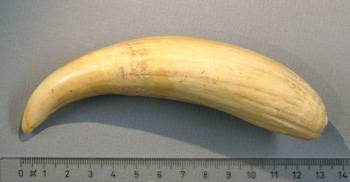
Credit: Hannes Grobe
Camper pointed out that the teeth of the unknown animal were embedded in deep sockets within the bone of the jaw, a fact confirmed by modern investigators (Lingham-Soliar 1995: 169). Such a condition is characteristic of neither snakes nor of varanid lizards (King and Green 1998). Indeed, such (“thecodont”) teeth are generally characteristic of mammals (Smith 1958: 223).¹⁵ In particular, the form of the Maastricht animal’s teeth, as Camper pointed out, and has already been mentioned, are like those of large extant toothed whales. Moreover, with the exception of crocodilians, thecodont teeth are not characteristic of extant reptiles.¹⁵
Camper died, however, soon after publishing his paper. His extensive fossil collection, which contained some of the best mosasaur specimens then known, passed into the hands of his son, Adriaan Gilles Camper. It was this son who first concocted the notion that mosasaurs were varanid lizards. Cuvier, who originated the idea that the Mesozoic was dominated by reptiles, readily embraced the idea that mosasaurs were huge lizards (though mosasaur fossils are always found in association with fossils of known marine origin). With the weight of his great reputation, he established the younger Camper’s theory as one of the standard hypotheses usually considered in discussions of mosasaur origins.¹⁶
One reader was particularly concerned with the fact that teeth are present in the palates of some kinds of mosasaurs as well as in those of certain extant reptiles, whereas modern whales do not.
The varanid theory was based on Adriaan Gilles' assertion that certain skeletal characters found in mosasaurs are not found in modern whales.¹⁷ However, a glance at figures 9.4 and 9.5, will convince most readers that mosasaurs have much in common with early whales. Certainly, they have far more in common with whales than does the late Cretaceous terrestrial insectivore traditional theory posits as the common ancestor of whales and all other placental mammals (it should be emphasized that all of the various forms classified as mosasaurs, too, are of late Cretaceous age). They are also far more similar to whales than is Pakicetus. One would not expect the ancient ancestors of whales to have every characteristic of modern whales. Their dissimilarity with respect to a few minor bony traits should not be allowed to obscure the well established fact that mosasaurs were huge, whale-like, air-breathing animals with whale-like teeth and that they had the same sort of prey as modern whales.¹⁸
Lingham-Soliar (1995: 178) says the disappearance of mosasaurs at the end of the Cretaceous “is an enigma,” “sudden and unexpected.” “Remarkably," he says, “like the dinosaurs, they were replaced by the mammals.” But for anyone who supposes mosasaurs are the ancestors of whales — a stage in the evolution of whales — there is nothing remarkable. There is only another case of the now familiar tendency (we have seen repeated examples in the previous pages of this section) of paleontologists to identify as reptiles forms of Mesozoic age — even when those forms are highly similar to younger forms known to be mammals. Here, once again, biologists have continued to embrace the “small, primitive, generalized” terrestrial, placental mammal of the late Cretaceous, despite the credulity required for such a view and despite the obvious similarity of cetaceans to mosasaurs, creatures tradition calls “reptile.”
Notes (Works Cited)
1. Gingerich et al. (1983); Romer (1966: 297); Savage and Russell (1983: 123).
2. Boyden and Gemeroy (1950); Slijper (1966: 312).
3. Known fossils are from the Eocene and are already quite whalelike. Ambulocetus (Thewissen and Aria 1994; Thewissen et al. 1996) cannot be counted as a transitional form because it is actually younger than the oldest rcognized cetacean Himalayacetus (Bajpa and Gingerich 1998). The evolution of whales from forms that are younger than the earliest known whales clearly isn't possible.
4. Taken with permission from a now defunct page of the Thewissen lab website.
5. McGowan (1973, 1978a, 1978b); Norman (1985: 21, 178); Romer (1966: 329, 371); Taylor (1987).
6. Since baleen, characteristic of certain modern whales, does not fossilize (Dixon et al. 1988: 233), some of these ancient whalelike animals may have had it.
7. Rothschild and Martin (2005: 341) say a mounted specimen of a mosasaur at the University of Kansas is 20 meters long.
8. The teeth of Mosasaurus are pictured in Camper (1786: Tab. XV, fig. 6); Lingham-Soliar (1995: 169, fig. 15); Williston (1898: Plate XIX).
9. The teeth of Hainosaurus are pictured in Lindgren (2005: 1160, fig. 2).
10. They also resemble in morphology, if not in size, the teeth of such medium-sized whales and dolphins as Delphinapterus, Feresa, Globicephala, Lagenorhynchus, Peponocephala, Steno, and Tursiops (Hillson 2005: 72, fig. 1.47).
12. Lee (1997) went so far as to define the taxon Pythonomorpha as the most recent common ancestor of mosasauroids and snakes, together with all its descendants.
13. Mosasaurs are usually described, too, as moving like snakes, with a sinuous motion, through the water. The writer finds this claim implausible — the pygal and caudal vertebrae of mosasaurs have long transverse processes (Lindgren 2005: 1162, fig. 4; Williston 1898, Plates XLII & LIV) that would limit any bending in the horizontal plane. The caudal vertebrae of whales also have long transverse processes — whales progress by flexing the body in the vertical plane. So, with regard to vertebral structure, the evolution of whales from “mosasaur” anceestors is entirely plausible.
14. Van Regerten Altena (1956).
15. Jacobson (2007: 6).
16. Lingham-Soliar (1995: 156).
17. Lingham-Soliar (1995: 156).
18. A few small fossils interpreted as the impressions of scaly skin have been recovered in connection with mosasaur remains (Geist et al. 2002; Snow 1878). On this basis it has been claimed that these animals were reptiles. But the patterns seen in these fossils may merely represent the texture of the skin itself, not that of scales covering the skin. The conclusion that they represent scales seems to have been prompted by the preconception that these animals were reptiles. Mammalian skin is known to exist in a vast variety of textures (Montagna 1971, 1974). In some cases it can have a texture that in a fossil would be nearly indistinguishable from reptile scales. For example, the naked tail of a beaver (Castor canadensis) bears such a pattern (Nowak 1999: 1308). There seems therefore to be no reason whatsoever to suppose on the basis of few fossils of dubious interpretation that mosasaurs were scaly when their skeletal anatomy so clearly implies a relationship with early whales.
9.8: On the evolution of whales - © Macroevolution.net